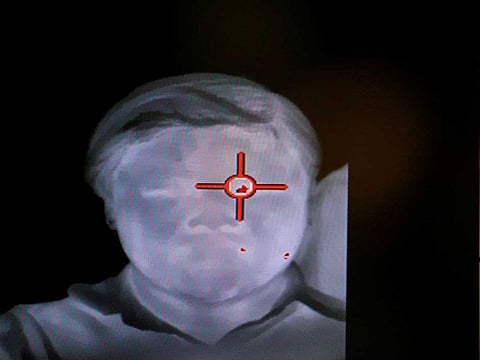How does the coronavirus kill? How many people would it kill?
Up to 65 million people could die from major virus outbreak, warns expert

Attacking the respiratory tract
Coronavirus infections attack the respiratory tract, which can then lead to illnesses like pneumonia or the common cold.
Between November 2002 and July 2003, an outbreak of severe acute respiratory syndrome (SARS) in southern China caused an eventual 8,098 cases, resulting in 774 deaths reported in 17 countries — with the majority of cases in China mainland and Hong Kong (9.6% fatality rate) according to the World Health Organization (WHO).
Since 2004, no cases of SARS were reported worldwide.
In recent days, a new SARS-like virus has so far killed 80 people (with 2,700 reported infections as of mid-day Monday), mostly in mainland China, according to official reports.
Known as Novel Coronavirus, codenamed by the WHO as 2019-nCoV, it is thought to have emerged from a market in the city of Wuhan, and has since spread around the world.
How does it kill?
The coronavirus infection triggers fever and coughing. It then leads to shortness of breath.
In severe cases — such as pneumonia — nCoV infection could lead to gastrointestinal problems, as well as kidney failure, according to the US Centres for Disease Control and Prevention (CDC).
What a leading virology team says
A leading Chinese virology team compared the genetics and proteins of the new virus, nCoV and SARS.
The team then warned: "The Wuhan nCoV poses a significant public health risk for human transmission."
Wuhan nCoV — aka the novel coronavirus (first detected in Wuhan in December 2019) — behaves like SARS, i.e. it has the ability to bind to a protein found on the surface of most human lung cells.
"People also need to be reminded that risk and dynamic of cross-species or human-to-human transmission of coronaviruses are also affected by many other factors."
These factors include the host's immune response, the speed with which the viruses can multiply inside human lungs, and the potential mutations that might make the virus more virulent or transmissible.
Signs and symptoms
Initial symptoms are flu-like and may include fever, muscle pain, lethargy symptoms, cough, sore throat, and other nonspecific symptoms.
The symptom common to all patients: fever above 38 °C (100 °F). This may eventually lead to shortness of breath and pneumonia — either direct viral pneumonia or secondary bacterial pneumonia.
Like SARS, the average incubation period for the novel coronavirus (2019-nCoV) is four–six days, though it could be as short as 1 day or as long as 14 days.
Route of transmission
The primary route of transmission is contact of the mucous membranes with respiratory droplets or fomites.
While diarrhea is common in people infected by coronavirus, the fecal-oral route does not appear to be a common mode of transmission, said experts.
What experts say:
Leading US health experts reportedly predicted in October that a new coronavirus could kill up to 65 million people in a year — in a warning issued three months before the recent outbreak in China.
Experts at the prestigious Johns Hopkins Center for Health Security modeled a hypothetical pandemic on a computer program as part of research last October.
The prediction was modeled using a hypothetical coronavirus outbreak.
The hypothetical disease took just 18 months to wipe out 65 million people around world. Dr Eric Toner, a senior researcher at Johns Hopkins, said he wasn't shocked when news of the coronavirus outbreak in Wuhan first came out in late December.
New pandemic
"'I have thought for a long time that the most likely virus that might cause a new pandemic would be a coronavirus,' he told Business Insider. "We don't yet know how contagious it is. We know that it is being spread person to person, but we don't know to what extent.
"An initial first impression is that this is significantly milder than SARS. So that's reassuring. On the other hand, it may be more transmissible than SARS, at least in the community setting."
How did Novel Coronavirus develop?
It's not clear. There are reports it was transmitted to humans who ate infected bats or snakes. There's no scientific proof to back this claim.
It was in late 2017 — 15 years after it was first detected — that Chinese scientists traced the SAR virus through the intermediary of civets to cave-dwelling horseshoe bats in Yunnan province.
But experts said the new coronavirus was likely transmitted from touching or eating an infected animal in Wuhan.
During the SARS outbreak, the virus killed about 1 in 10 people who were infected.
How to prevent coronavirus
There is no vaccine yet for coronavirus. Isolation and quarantine remain the most effective means to prevent its spread.
Other preventative measures include:
What are the effective public health interventions?
Many public health interventions werare being e made to try to control the spread of the disease, which is mainly spread through respiratory droplets in the air.
These interventions included:
A screening process was also put in place at airports to monitor air travel to and from affected countries.
Although no cases have been identified since 2004, the CDC is still working to make federal and local rapid response guidelines and recommendations in the event of a reappearance of the virus.
Who does it affect the most?
Coronavirus is most infectious in severely ill patients, usually occuring during the second week of illness.
Sign up for the Daily Briefing
Get the latest news and updates straight to your inbox











